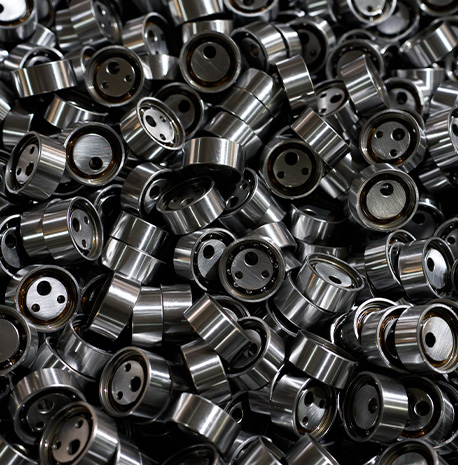In modern industrial applications, steel continues to play a critical role as a fundamental material for manufacturing and engineering. Whether for structural support, load-bearing systems, or high-performance machinery, the type of steel used must be selected with great care. Understanding the brand categories and uses of steel, especially in relation to specialized items like metal bearing plate, common spring steel, and steel plate bearing, can help industries make more informed decisions for their operations.

1. Steel: A Foundation for Industrial Manufacturing
Steel is one of essential construction and mechanical materials. It is classified based on its cross-sectional shape, which includes round steel, flat steel, square steel, hexagonal steel, octagonal steel, angle steel, I-beams, T-beams, B-beams, and channel steel. These shapes are used across different fields for purposes ranging from load distribution to machine framework design.
One of common applications for flat steel or angle steel is the metal bearing plate, a structural component used to distribute loads and reduce stress on concrete or support beams. The metal bearing plate is vital in bridge construction and large machinery where surface pressure needs to be spread evenly.
2. Steel Plate: The Backbone of Load-Bearing Applications
Steel plates are another core category in steel materials. They can be classified by thickness—thick steel plates and thin steel plates—and by their specific use. Types include general-purpose plates, boiler plates, shipbuilding plates, and automotive-grade plates.
In civil engineering and mechanical installations, the steel plate bearing is frequently employed. A steel plate bearing provides support at joints, where flexibility and movement must coexist with strong static load capacity. Bridges, towers, and cranes often rely on steel plate bearing designs for durability and safety.
Furthermore, the metal bearing plate is also crafted from specific steel plate types, particularly thick galvanized steel plates, to enhance corrosion resistance and structural strength in long-applications.
3. Steel Strip: Flexibility for Manufacturing Processes
Steel strips are subdivided by delivery status into hot-rolled and cold-rolled varieties. These strips serve as a flexible form of material feed in industries like automotive, appliances, and steel framing.
Though steel strips are less often used directly in metal bearing plate design, they can be processed into components that form part of steel plate bearing systems. Cold-rolled strips, in particular, are selected for precision-based bearing plate applications due to their tighter tolerances.
4. Steel Pipe: Versatility Across Industry Needs
Steel pipes, depending on how they are manufactured, fall into two categories: seamless (hot-rolled or cold-drawn) and welded. Their applications span from general plumbing to specialized oil transportation and heat exchange systems.
When paired with metal bearing plate assemblies, seamless steel pipes are often integrated into mechanical frameworks where alignment, strength, and vibration reduction are critical. Moreover, steel plate bearing configurations in oil refineries and boiler systems frequently involve reinforced pipe-to-plate connections for load management.
5. Steel Wire: Specialized Strength and Tension Control
Steel wire is a high-precision product used in springs, cables, and wire mesh. Based on processing method, steel wire can be cold-drawn or cold-rolled. Its applications extend into telecommunications, welding, and spring manufacturing.
A key material in this category is common spring steel, widely used in automotive and mechanical equipment. Common spring steel delivers high elasticity and fatigue resistance, making it great for crafting tensioning components in metal bearing plate and steel plate bearing systems. The robust behavior of common spring steel under dynamic loading is vital for the longevity of these structures.
6. Steel Wire Rope: Advanced Load-Bearing Solutions
Wire ropes composed of multiple strands are utilized in elevators, cranes, and marine operations. Variants include single-strand, six-strand, and even eighteen-strand ropes. Inner core materials may be organic or metallic, and surface finishes include galvanized and non-galvanized types.
In tension-based systems, wire ropes often interact with metal bearing plate frameworks. For example, in suspension bridges or tension towers, wire ropes pass through and anchor into steel plate bearing assemblies. The interface between the rope and plate must absorb both static and kinetic forces, requiring precise integration and material compatibility, often involving common spring steel parts for resilience.



 English
English русский
русский
